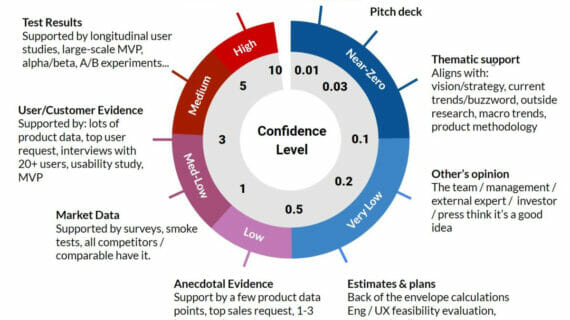Product Development Process
The product development process refers to the systematic approach taken to bring a new product or service from conception to market launch. It involves a series of stages and activities that include ideation, research, design, prototyping, testing, manufacturing, and commercialization. The process aims to ensure that the final product meets customer needs, aligns with business objectives, and is successfully introduced into the market. It typically involves cross-functional collaboration, market analysis, iterative refinement, and continuous evaluation to deliver innovative and successful products
Embark on a transformative journey through our comprehensive collection of resources on the product development process. From ideation to launch, equip yourself with invaluable insights and practical strategies to bring your vision to life and conquer the world of innovation.
FEATURED CONTENT
LATEST POSTS
Critical Thinking for Product Teams by Teresa Torres
In this illuminating talk from Mind the Product London 2017, Teresa Torres shares her opportunity solution tree – a visual aid that can help you find the best place to focus your team’s energies, whilst ensuring you consider enough opportunities. Opportunity solution trees also bring transparency to the process and get the whole team to Read more »
The Roadmap Dilemma: When to Grow, When to Learn
All products start with one thing in common: teams face a certain degree of uncertainty about the market they’re targeting. In Lean methodologies, you build an MVP to collect user feedback and confirm your hypotheses, or you learn from your mistakes and pivot. Reducing uncertainty, therefore, comes as a result of learning cycles, and will Read more »
System Thinking for Product Managers by Johanna Kollmann
In one of the keynotes of this year’s MTP Engage Hamburg, Johanna Kollmann reviews established system thinking concepts and applies them to the world of today’s product management. Read more »
Understanding how Design Thinking, Lean and Agile Work Together
The ideas of Agile are great. It’s the way it has been codified into rituals and certifications, and rolled out mindlessly that misses the point. When people talk about Lean, the conversation often ends at process optimization, waste, and quality, and misses so much of what the Lean mindset offers. Design Thinking is held high as the Read more »
How we Saved our Funnel Drop-offs After They Happened
One of the biggest problems for e-commerce, demonstrated by about 74% of users worldwide, is cart abandonment. It means three out of every four shoppers in your online store walk away AFTER they’ve put their items in the cart. If you’ve ever tried to deal with cart abandonment, you might find our story interesting — we brought back 11% of Read more »
Turn Your Release Notes Into a Content Marketing Machine
If you’re in a product company the chances are that you’ve developed some process of informing your users about new features. This could be in the form of a blog post or as a notification within the UI. But it doesn’t have to stop there. Spending a bit more effort on the process can help Read more »
Being Lean: Don't Speculate to Accumulate, Validate to Succeed
First coined in the mid 20th century, the term “speculate to accumulate” refers to the need invest (at some degree of risk) in order to make meaningful gains. In other words; roll the dice, take a punt, have a gamble. This is a risky strategy for product managers, and if your gambling skills are anything like Read more »
Product Requirements: Using a Written or Visual Framework
There’s a lot of variation in how companies document product requirements. Some are moving away from detailed, written product requirements documents (PRDs), while others are using shorter write-ups, user stories, or jobs-to-be-done formats. Some product teams are moving away from written PRDs to visual artifacts like mockups and prototypes. It’s a change in approach that’s driven by demands for more agility Read more »
Using the Kano Model to prioritize product development
I was first introduced to the Kano model in a talk by the brilliant Jared Spool, and it immediately struck a chord with me. Here is a beautifully simple model to distinguish between basic and differentiating features. The model was developed by Noriaka Kano in the 1970s and 1980s while studying quality control and customer Read more »




